Tonsil stones or tonsilloliths are the small, off-white waste that is normally found in the back of the throat. However, they’re often symptomless and cause minor difficulties such as painful swallowing, inflamed red tonsils, and bad breath which we all know and hate.
In this article Bright Side wants to share with you some ways you can get rid of tonsil stones by yourself. We also want you to know when it’s necessary to see your doctor and how to prevent their recurrence.
1. Removing tonsil stones using cotton swabs
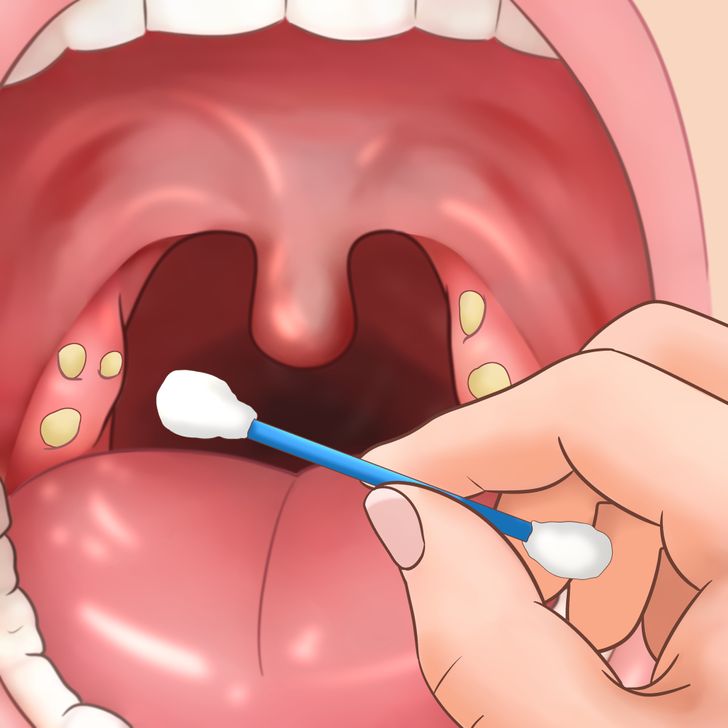
1. Gather these items along with the cotton swabs:
- A mirror
- A toothbrush
- A flashlight
- Running water
2. Open your mouth and glow the flashlight down your throat. Doing this in front of a mirror will help you to see the tonsil stones.
3. Stick out your tongue and say, “Ahh!” to tighten up the muscles in the back of your throat. This should help push your tonsils forward to see them better.
4. Run some water on the cotton swab to make it softer and less irritating for your throat. Avoid putting it down on the counter to prevent contamination.
5. Poke at the stones gently with your swab and press on the tonsil stone until you dislocate it. Then, gently pull it out of your mouth with the cotton.
6. Be very gentle as well since bleeding may occur. However, sometimes a little bleeding is normal but you should be careful to minimize it. Remember, cuts and wounds can get infected by the same bacteria that caused the stones.
7. Rinse your mouth out with water to ensure you have removed all of the stones, especially if your saliva feels a little sticky. Just drink water to thin it out.
2. Using an oral irrigator
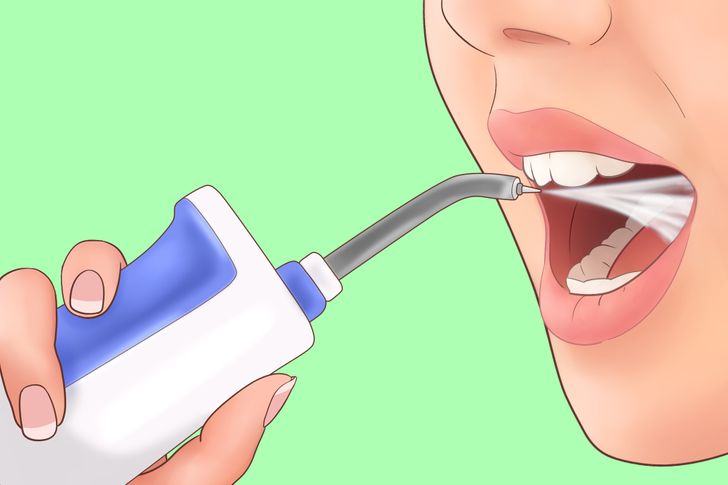
You can also use oral irrigators like water-picks which are often used to push tonsil stones out of their cavities, just use it on its lowest setting.
But before you buy it, test it out first on your tonsils to see if the spray is too strong. If it is and it hurts in any way, avoid using it to get your stones out.
Put the irrigator inside your mouth without touching the stone and switch on the irrigator to its lowest setting. Then direct the stream of water onto one visible stone and keep it firm until the stone has been dislocated.
3. Gargling to remove and prevent the stones
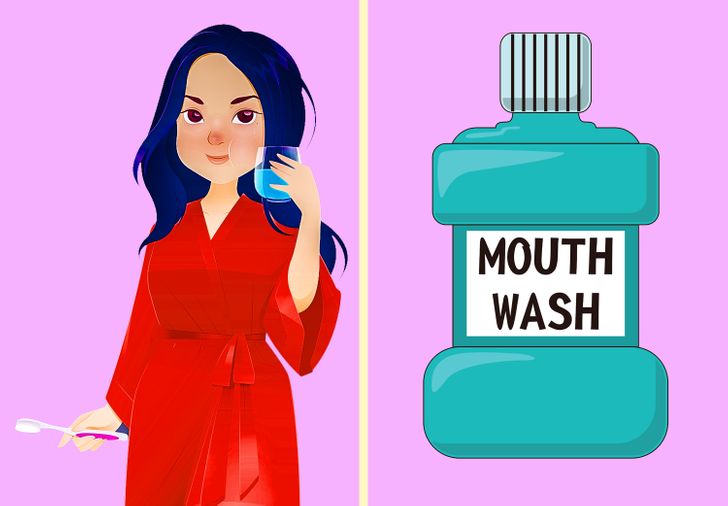
© depositphotos.com, © depositphotos.com
Gargling using mouthwash after eating is also a great tip since the tonsil stones often form after leftover food gets stuck in the holes.
It’s recommended to gargle with an alcohol-free mouthwash after eating. Not only will the wash improve the health of your teeth and gums, but it will also help dislocate any tiny bits of food.

Also, a mixture of warm water and salt is best for gargling since it dislocates bits of food from the tonsil craters. You should mix a teaspoon of salt into 6 ounces of water and stir until mixed.
Then gargle the salt water with your head tilted back. Salt water tends to soothe any discomfort caused by tonsillitis.
You could also invest in oxygenating mouthwashes since they contain chlorine dioxide and natural zinc compounds that aid in hindering bacterial growth due to the presence of oxygen.
However, oxygenating mouthwashes are very strong so they should only be used once or twice per week. You can also just supplement your oxygenating mouthwash with a natural wash.
4. Gargling using apple cider vinegar

© shutterstock.com
Vinegar tends to break down the tonsils because of its acidic content. Dilute some apple cider vinegar with water in a glass and gargle. Start by mixing a tablespoon of apple cider vinegar with a cup of warm water and gargle. Try doing this 3 times a day as it may aid in loosening the stones faster.
However, it’s worth noting that there are risks to using apple cider which include the possibility of digestive problems and tooth decay.
5. Using essential oils
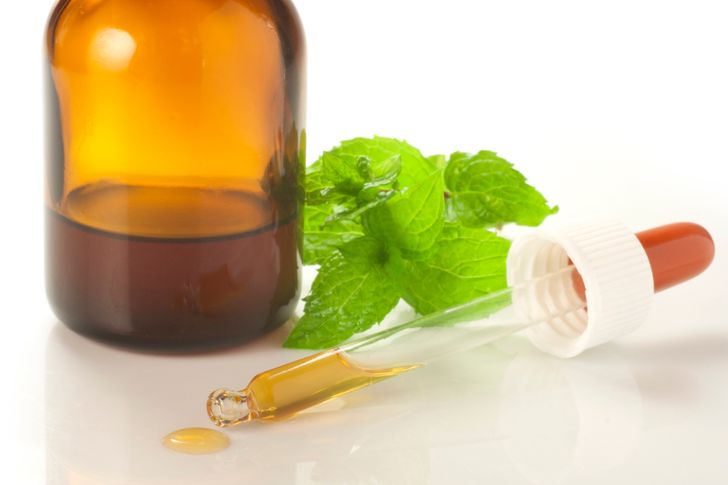
© depositphotos.com
Essential oils such as lemongrass and myrrh oil may also help reduce tonsil stones due to their anti-inflammatory and anti-bacterial properties.
Begin by diluting the essential oil in a carrier oil and place 1 or 2 drops on a toothbrush before brushing the stones. It’s recommended that you don’t use this toothbrush going forward because of the amount of bacteria involved.
6. Using a simple toothbrush
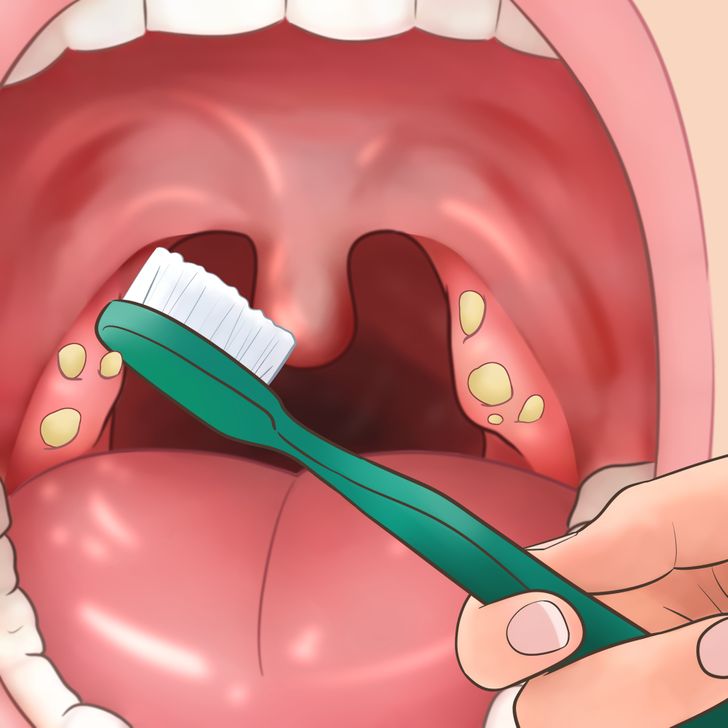
Using the backside of a toothbrush (which is also the flat side), carefully try to lift the tonsil tissue and find the hardened deposits. Gargle with some salt water afterward to prevent any further bacterial infection.
By brushing the tongue often, as well as the teeth, you can reduce the excessive amount of bacteria in the mouth and prevent future tonsil stones from forming.
7. Eating yogurt

© shutterstock.com
Yogurt is also a good antidote for preventing tonsil stones since it contains lactobacillus acidophilus and other beneficial probiotics that each have unique health benefits.
The probiotics aid in getting rid of the bacteria that cause tonsil stones.
8. Chewing on carrots
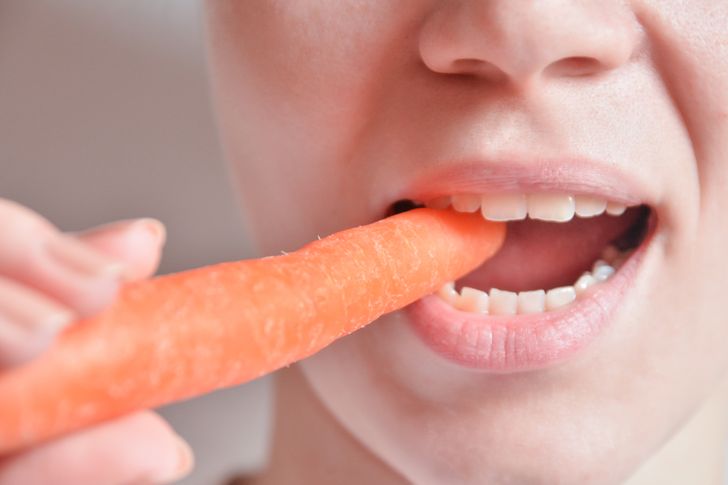
© shutterstock.com
Eating carrots helps increase saliva, which in turn helps to reduce and eliminate tonsil stones.
9. Seeking medical attention
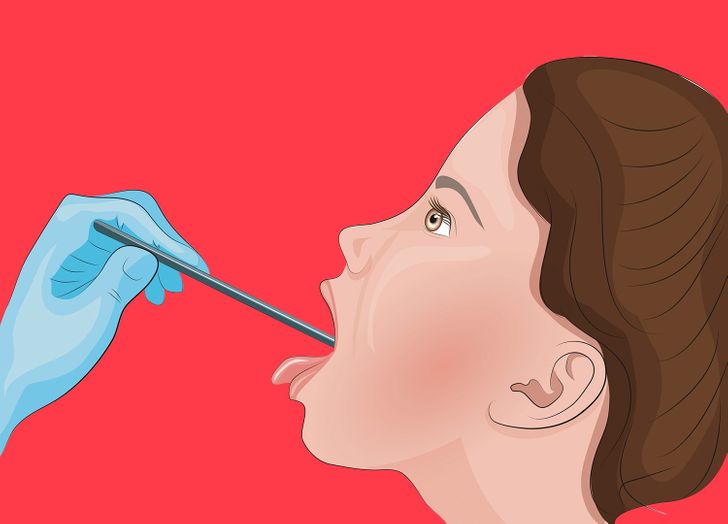
© shutterstock.com
It’s also advised to discuss with a doctor about getting a tonsillectomy which is a simple and effective procedure that is commonly used to remove stubborn tonsil stones. It’s relatively low-risk, the recovery period is short and it’s likely followed by some throat pain and a little bleeding.
10. Take some antibiotics

© shutterstock.com
Additionally, you can consider using antibiotics after consulting with your doctor for persistent or severe tonsil stones. Different antibiotics like penicillin can be used to treat tonsil stones. However, they might fail to reverse the cause of the tonsil stones, which is food getting caught in the tonsils.
11. Laser treatment
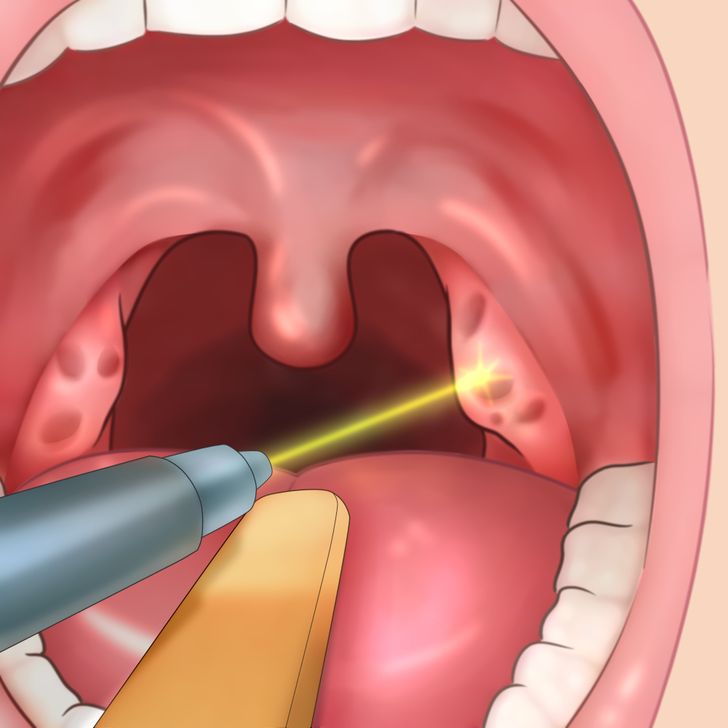
If possible, ask and consult with a doctor regarding laser treatment options since the tissue that holds the deep tonsil pockets can be removed using a laser. Laser resurfacing smooths out the surface of the tonsils so that they no longer have pockets and holes.
Keep in mind that this procedure has risks of its own and should be done cautiously.
Good oral hygiene can help prevent tonsil stones. Brush, floss, and rinse regularly.
Have you had tonsil stones before? What methods did you use to remove them and what can you recommend? Share your experience with us in the comments below.


